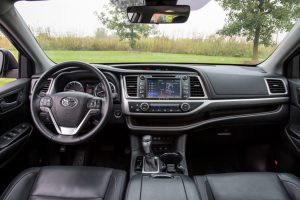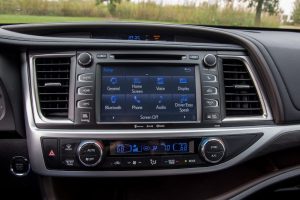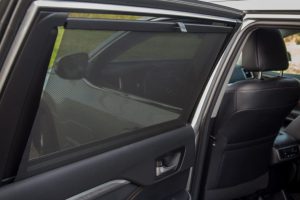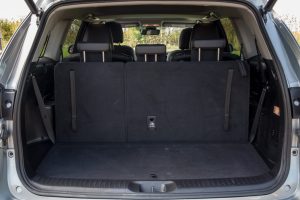We may be in 2018, but I bet you, the 2017 Toyota Highlander still remains my favorite SUV of all time. What made it my favorite is because of the interior design, filled with vibes, decor, comfort and class.
Well, despite being my best SUV car, the Highlander still have some cons, although I won’t mind if I were you, but I know some persons still glued to their perfect-touched thingy.
In this review, we going to look into the interior design of the 2017 Toyota Highlander SUV, compare and contrast it decoration as well as other models. Sit back and relax as I take you into your waka-mole.
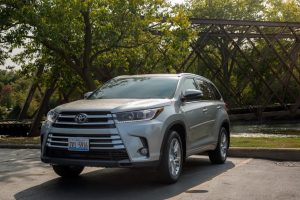 |
| Credit: Cars.Com |
The Highlander’s interior carries over much the same from the 2016 model. Even though materials are consistently good in the first and second rows, an area where some brands like to use lower-grade trim, the overall design looks dated in the face of newer competitors like the Traverse and Atlas. Still, I don’t mind.
The cabin does have some elements that set it apart, including a wide device tray at the bottom of the dashboard that also includes a cord organizer. It’s one of those things with obvious appeal considering how many people tote smartphones, but you won’t see something like it in other three-row SUVs. The storage bin between the front seats is among the largest in the class, with enough room to hold a laptop or purse; my favorite indeed.
The front bucket seats are comfortable and the Limited’s driver’s seat features an adjustable bottom cushion extension that lets you vary thigh support, which I appreciated. Of the four SUVs we tested, the Highlander was the only one with ventilated front seats in addition to the heated seats they all had.
Yeah, I know this may seem somehow unappealing, as the the Highlander is, however, missing two popular features common among its competitors: Apple CarPlay and Android Auto smartphone connectivity. The Limited’s 8-inch touchscreen multimedia system does include navigation and Bluetooth streaming audio, and it was easy to pair my iPhone using Bluetooth. Though the system is easy to use overall, the touchscreen’s graphics are basic compared with the Atlas’ high-resolution screen.
The optional second-row bucket seats slide forward and back quite a distance. Even though the seats themselves are comfortable, they’re close to the floor, resulting in a less-than-ideal seating position.
It’s a good thing there’s so much second-row seat travel, because adults who dare sit in the third row will need as much space as possible for their legs. With its low seat cushion and knees-up position, the Highlander’s third-row seat is considerably less comfortable than the Traverse’s or Atlas’, and its third-row comfort rating was worst of the four SUVs in the Challenge. The third row’s backrest does recline quite a bit, however.
The Highlander’s cargo storage was also judged worst. With just 13.8 cubic feet of cargo room behind the third row, it’d be hard to pack for a family trip if all three rows of seats are needed.
But, I still prefer it to other SUVs out there. Let’s hope and see whether the next version will feature everything; it’d be exceptional too.
Credit have to be given to Cars.Com too. These guys are amazing.
